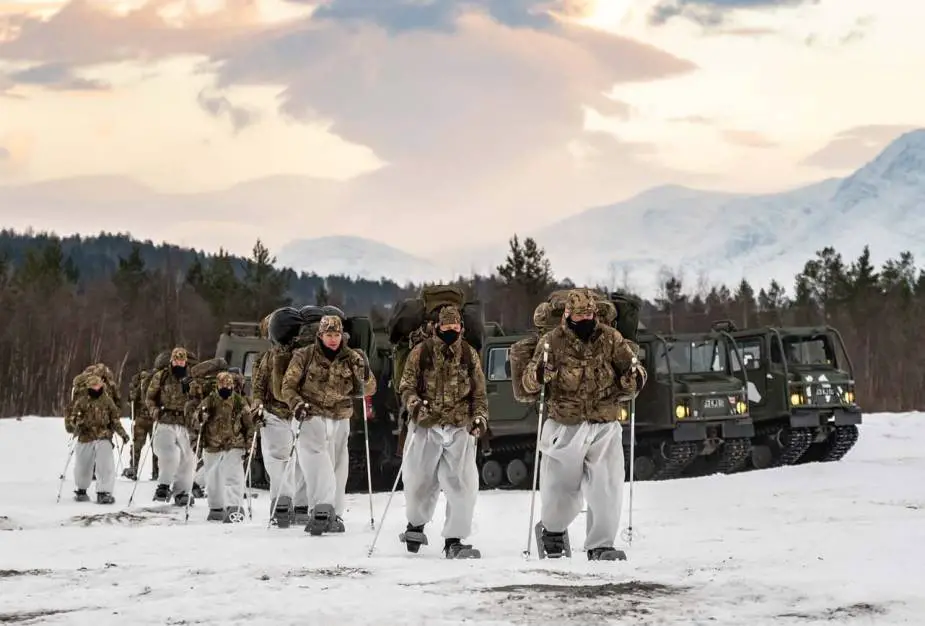Breaking news
UK Royal Marines begin intensive arctic training.
Royal Marines have deployed to the ice of the Arctic as the next generation of winter warriors are put through their paces in one of the world’s most extreme environments. All deployed marines have been through a rigorous quarantine period, with UK troops to conduct training in a bubble and in line with the Covid-19 guidelines of host nation, Norway.
Follow Army Recognition on Google News at this link

Royal Marines are put through their paces by instructors of the Royal Marines Mountain Leader Cadre – a hardy group of commandos highly-trained and experts in all things cold weather – to be ready to survive, move and fight in the freezing conditions (Picture source: Royal Navy)
Scarcely four hours of daylight and temperatures well into the minus numbers have greeted hundreds of green berets – primarily from Arbroath-based 45 Commando but also from a range of specialist units from around 3 Commando Brigade – as they begin their 2021 winter deployment. Exercises with Norway, the United States, the Netherlands and Germany have been cancelled by the Norwegians due to Covid-19, but crucial training has resumed in the short-term for those who have been through quarantine.
Royal Marines 45 Commando’s Commanding Officer, Lieutenant Colonel Innes Catton, said: “45 Commando is currently deployed in Norway conducting essential training as the Lead Commando Unit. As Cold Weather Warfare specialists held at very high readiness, this training is vital to retaining capability to deploy anywhere in the world in the event of crisis and to support our NATO allies in the region. Stringent control measures and quarantine procedures are in place to protect the local population and our people in Norway, as well as our families upon return to the UK.”
Marines are put through their paces by instructors of the Royal Marines Mountain Leader Cadre – a hardy group of commandos highly-trained and experts in all things cold weather – to be ready to survive, move and fight in the freezing conditions.
First, those who are new to the Arctic must undergo a series of intensive trials to ensure they are able to survive – building shelters, living off the land and dealing with cold shock during the infamous ice breaking drills, which involves being plunged into a hole in the ice and climbing out of the water unassisted using ski poles. This brutal part of the training is designed to help participants recognise and reduce the risks of cold shock: a physical response to being immersed in cold water that can rapidly incapacitate and even kill.
Crossing a frozen lake or river can bring a tactical advantage but comes at significant risk, so ice breaking is about preparing for being suddenly dropped into bracing water. After rewarming from their dip through the ice, those on the survival course head into the wilderness to construct and inhabit survival shelters. Half the battle is managing the climate and the terrain. Snow storms can occur suddenly, so learning the basics of survival is key to operating in the Arctic conditions.
The Cold Weather Warfare Course has three phases – survival, mobility and warfare. This creates a well-rounded winter warrior, enabling the commandos to operate effectively in this unforgiving environment.
Deployed alongside 45 Commando are marines of 30 Commando Information Exploitation Group, Commando Logistic Regiment and Commando Helicopter Force, plus British Army troops from 24 Commando Royal Engineers and 29 Commando Royal Artillery.

The Cold Weather Warfare Course has three phases – survival, mobility and warfare. This creates a well-rounded winter warrior, enabling the commandos to operate effectively in this unforgiving environment (Picture source: Royal Navy)




























